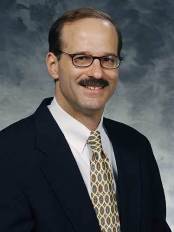MPEL Seminar
Modeling Frameworks to Enable New Opportunities in Grid Optimization and Control
This event is free and open to the publicAdd to Google Calendar

Abstract
Today’s power grid presents a broad array of opportunities for optimization and control that could significantly improve economy and resiliency of electric energy use in our society, while decreasing its environmental impact. These range from cost reductions in distributed electric power production and storage hardware, to advances in power electronics that facilitate high bandwidth control of power conversion, to IoT technologies that open the door to participation of millions of consumer end-use devices and building systems as grid control “actuators.” Analysis to predict the potential benefits and pitfalls of such technological change in a critical societal infrastructure requires high fidelity models. Power grid steady-state and dynamic modeling are well established topics, with long, successful histories. However, many of the new technologies being deployed bring significantly different characteristics to the grid, and suggest the need to revisit and re-evaluate the assumptions and analysis techniques that underlie textbook optimization and dynamic control models. This talk will begin from the quasi-steady state typically analyzed in optimal power flow, critiquing long-utilized approaches in network representations. These have tended to restrict allowable network element models to two-terminal devices plus transformers, using nodal analysis to eliminate variables from KVL and KCL constraints. We argue for the advantages of generalized multi-port device representations, and retention of unreduced KVL and KCL equations in a general sparse tableau formulation of network constraints. We go on to examine key modeling assumptions used in large-scale grid dynamics. In traditional systems dominated by synchronous machines, frequencies have long served as a key measurements to inform feedback control. Widely deployed technologies (PMUs) purport to MEASURE grid frequencies. However, we will argue that the power systems field has perhaps not adequately confronted the underlying question of how to best DEFINE instantaneous phase (and hence frequency), when confronted with arbitrary voltage or current waveforms divorced from association with mechanical rotation of synchronous machines.
Christopher L. DeMarco (M’85) received the B.S. degree in electrical engineering and computer sciences from the Massachusetts Institute of Technology in 1980 and the Ph.D. degree in electrical engineering and computer sciences from the University of California at Berkeley, Berkeley, in 1985. He holds the Grainger Professorship in Power Engineering with the University of Wisconsin–Madison, where he has been a member of the Faculty of Electrical and Computer Engineering (ECE) since 1985. His research and teaching interests center on control, operational security, and optimization of electrical energy systems. He has served as the ECE Department Chair from 2002 to 2005, and has been the UW-Madison Site Director for the Power Systems Engineering Research Center since 2004. He was a recipient of the UW-Madison Chancellor’s Distinguished Teaching Award in 2000.
 MENU
MENU 
